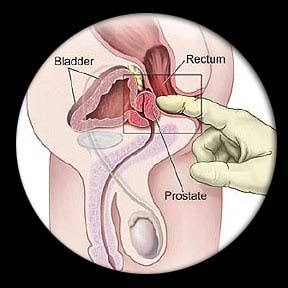Frequent Urination in Men
 Once upon a time in the middle of the night, you felt a strong urge to urinate. Not a big deal, right? But what if these urges became more frequent and repeat over and over throughout the day, and urges meant you really had to go badly? Frequent urination might not sound like a big deal but it can signify a graver underlying problem.
Once upon a time in the middle of the night, you felt a strong urge to urinate. Not a big deal, right? But what if these urges became more frequent and repeat over and over throughout the day, and urges meant you really had to go badly? Frequent urination might not sound like a big deal but it can signify a graver underlying problem.
It may well be connected to your prostate glands. This, in turn, presents a pressing problem. This has many symptoms and they include obviously having the frequent urge to pee, an incomplete urination, the feeling of going to the bathroom “right now,” urinating on yourself because of urinary incontinence, burning sensation while peeing and blood in the urine.
Why It Happens? Here are the Major Reasons of Frequent Urination in Men:
There can be various reasons behind frequent urination in men. They are listed below-
– Diabetes: There are two types of diabetes (rise of glucose level in blood). Type 1 and Type 2 and both of them effect the urination. – Medicines taken by patients of high blood pressure may sometimes cause result in excessive fluid build-up in the kidneys leading to frequent urination.
– Prostate Conditions: An enlarged prostate gland, a phenomenon that is known as Benign Prostatic Hyperplasia or BPH also makes the walls of the urinary bladder irritated causing frequent urination in men.
– Infection in the urinary tract can also be a major cause of frequent urination in men.
– Overactive Bladder Syndrome: This is another major cause of frequent urination is caused by involuntary contractions of the urinary bladder even if it is not full.
– Excessive intake of alcohol, caffeine, carbonated drinks, artificial sweeteners; citrus foods irritate the walls of the urinary bladder causing frequent urination.
Frequent Urination in Men As A Result Of BPH and Prostatitis:
Let us now put emphasis on the causes of frequent urination of men. It is a result of Benign Prostatic Hyperplasia (BPH) and Prostatitis. Prostate is a compound tubuloalveolar exocrine gland of the male reproductive system that store and secretes a slightly alkaline fluid that usually contains 20–30% semen along with spermatozoa and seminal vesicle fluid. Now, if a person suffers from BPH the size of the prostate gland increases. Technically speaking, it involves hyperplasia or increase in the numbers of stromal and epithal cells present in the prostate gland. This results in the formation of large, distinct, spherical structures or nodules around the periurethral region of the prostate. (Periurethral region is the one where the tissues surrounding the urethra are present). When the nodules get enlarged enough, they start compressing the urethral canal causing partial and even total obstruction to the urethra. This naturally affects the normal flow of urine leading to frequent urge of urination in the patient. Besides interfering with the flow of urine, this also causes dysuria (painful urination) and also increases the risk of infection in the urinary tract, urinary hesitancy as well as urinary retention, which again is one of the major causes of frequent urination in men. However, it should be taken into account that BPH is not premalignant laceration that will lead to cancer.
Prostatitis is another very common reason of frequent urination in men caused by accumulation of certain bacteria within the acini sacs of the prostate thereby causing inflammation of the prostate gland. It also leads to partial as well as total blockage of urethral canal that ultimately causes frequent urination.
Suggested Treatments of Frequent Urination in Men:
Though BPH and Prostatitis can occur in men of any age resulting in frequent urination, it’s generally seen that frequent urination in men occurs after attaining an age of 50. It is highly curable if diagnosed at an early stage. The symptoms involves slow or weak flow of urine, a delay in the start of the flow, frequent urge to urinate –specially during night that disturbs sleep, a burning sensation while urinating. One needs to visit an urologist without delay in these cases. There are a lot of ways of treatment. One is the very conventional way of application of alpha-blocker drugs which are also used to treat high blood pressure. These drugs smoothens the muscles of the urinary bladder neck and regularizes the flow. Common alpha-blocking drugs are Tamsulosin (Flomax), Alfuzosin (Uroxatral) and Doxazosin (Cardura). However, these drugs may have side effects like nausea, light headedness, fatigue etc.
Another way of treating the frequent urination in men involves partial shrinking of the prostate by lowering the level of the flow of male hormone inside the gland by using alpha reductase inhibitor drugs like finasteride (Proscar) and dutasteride (Avodart). However, it’s imperative that one should consult a doctor and take his recommendation before taking any drug.
A combination therapy can also be also applied that involves application of both the types of drugs discussed above. Herbal therapy is also another very popular way of treating frequent urination in men. There are other ways of treatment other than application of drugs. They include catheterization, Holmium Laser Enucleation of Prostate (HoLEP), Interstitial Laser Coagulation Prostatic Stenting Transurethral Microwave Thermotherapy of the Prostate (TUMT), Transurethral Radio Frequency Needle Ablation of the Prostate (TUNA), Transurethral Resection of the Prostate (TURP), Transurethral Incision of the Prostate (TUIP), Open Prostatectomy.
Focus on prostate massage as a treatment:
Prostate Massage Therapy is the most common way of treating frequent urination in men simply because it does not involve any drugs. It originated from the medical professionals as well as the Tantric masters in ancient China and India thousands of years ago. They practiced the therapy to enhance the sexual lives of the emperors and kings apart from treating the frequent urination in men that was common even in those days. There are two different ways of Prostate massage – Internal and External.
Internal Prostate Massage therapy involves inserting a lubricated finger or an instrument (specially designed for this purpose) through the anal opening and reaching the gland. A proper massage of the prostate walls will ease the flow of urine to some extent. Though it can be done by the patient himself, it is highly recommended to consult a doctor before doing it. It will be best if an expert in the field does it to the patient. Another method that can be carried out is the External massage. The skin between the scrotum and anus is stripped off. You will find a seam that is running along the length of the perineum. The doctor runs his fingers back and forth along that seam till you feel relieved.
Apart from the above two methods, there is another method for those who would like to avoid the embarrassment of taking their clothes off in front of the doctor. This method was invented in Alaska in the year 2005 and is quite popular now. It is generally done with the help of an apparatus called Prostate Cradle. It is specially designed to massage the prostate externally. The patients are at ease with this method as there is no need to insert the finger or the massager into the anus. It is specially designed to massage the prostate externally to nullify the disgrace of frequent urination in men to a large extent.
But let us focus on how it can be very well connected to prostate problems. The man’s prostate is in a location where in it surrounds the urethra and the latter is where the urine from the bladder takes its route. If a man has an enlarged prostate, it can irritate the bladder. Hence, this will make the man more susceptible to urinating more than usual.
As the prostate gets more enlarged without the knowledge of the individual, the bladder has the potential to contract more causing it to expand and make the individual urinate even if he has not consumed a lot of liquids. Peeing may seem like commonplace to everyone but as we grow older, especially men, they get problems like this and it eventually becomes more transparent.
Frequent urination can be treated. If this problem is connected to the enlargement of your prostate, you can start with taking the following steps:
1. Watch what you eat. Stay away from spicy food, carbonated beverages and red meat. Click here to read more about diet.
2. Establish a regime of taking Vitamins and supplements regularly, like Vitamin E and Selenium, as they are crucial to maintain proper chemical balance. Click here to learn more about supplements.
3. Take the time out of your day for regular prostate massages! Prostate massages stimulate blood flow in the prostate gland, which leads to relief of pain, reduces inflammation and gets rid of feeling of bladder discomfort. Click here to learn more about prostate massages.
4. Visit a urologist and have him examine your prostate. Although statistically it may take up to 3 months to get an appointment with a urologist, so in the meantime don’t just wait and take your health into your own hands and change your toxic habits, like eating junk food and drinking 5 cups of coffee, to healthy ones. Who knows, you may not even need the appointment after all and avoid the unpleasantness of having a prostate exam. Click here to learn more about prostate exam.



